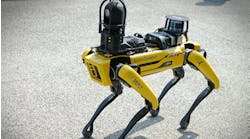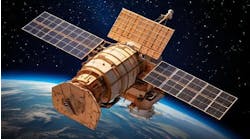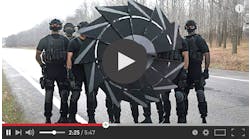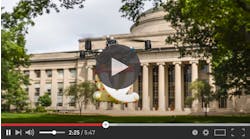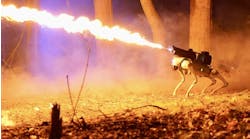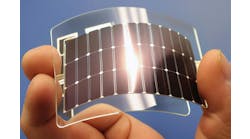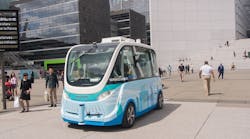Another Self-Driving Crash Highlights Risks of Sharing Road With Robots
by Ryan Beene and Alan Levin, Bloomberg
It only took a few hours for the first self-driving taxi shuttling people around Las Vegas to collide with a vehicle being driven by a human doing something it didn't expect.
The driverless passenger van was on its first day Wednesday of offering free rides to people along a half-mile loop in Las Vegas, part of a pilot program to study the technology. It was dinged by a tractor-trailer as the truck attempted to back into an alley to make a delivery.
No one was hurt and the damage was minimal but the U.S. National Transportation Safety Board sent a team to investigate what's sure to be a growing concern among motorists and authorities: the interaction of self-driving vehicles with their human counterparts.
"This is exactly the kind of real-world scenario that this pilot is attempting to learn from," said John Moreno, a spokesman for AAA, formerly the American Automobile Association, which is sponsoring the self-driving shuttle in Las Vegas. "This is one of the most advanced pieces of technology on the planet, and it's just now learning how to interact with humans and human driving."
In this case, the pod-like Navya SAS shuttle had been behind the truck, which stopped, shifted into reverse and began backing up slowly to turn into the alley.
Police were called to the scene and the truck driver was issued a ticket, Moreno said. The public information office of the Las Vegas police department was unavailable for comment.
The shuttle is manufactured by Navya and operated by transportation services company Keolis SA, both based in France, as part of AAA's pilot program to offer rides to the public in the city, expose riders to autonomous technology and study how the shuttle performs in real-world scenarios.
With another vehicle behind the Navya shuttle, it froze in place as the truck backed up, Moreno said. The Navya vehicle, which organizers light-heartedly patched with band-aids, has a human operator on board who can take control of the vehicle, but "it just happened too quickly," he said.
While the truck driver was cited, the incident shows how autonomous cars can struggle to anticipate the nonverbal communication that goes on between human drivers on the road every day, said Duke University robotics professor Missy Cummings.
"He probably had an expectation that the shuttle would back off and allow him to do his thing," Cummings said. "Obviously that doesn't work. There wasn't the logic inside this little shuttle to anticipate this."
Digitaltrends.com reporter Jeff Zurschmeide was on board the van during the incident and described it in a Thursday web post.
"We had about 20 feet of empty street behind us [I looked] and most human drivers would have thrown the car into reverse and used some of that space to get away from the truck," Zurschmeide wrote. "Or at least leaned on the horn and made our presence harder to miss. The shuttle didn't have those responses in its program."
The NTSB has sent a team of four investigators to examine the accident, which spokesman Chris O'Neil said is the agency's first probe of a collision involving a driverless car.
The dispatch signals the NTSB's growing interest in the rapidly expanding use of automated systems in motor vehicles. In September, the NTSB issued a report critical of Tesla Inc.'s semi-autonomous systems that allowed a driver in Florida to go for extended periods without putting his hands on the steering wheel. The Tesla Model S, which was steering itself, slammed into the side of a truck in Florida in 2016, killing the driver.
While citing the actions of the two drivers as the primary cause, the safety board ruled that Tesla's Autopilot design also contributed to the accident. Even though the car could be used for extended periods without human intervention, it was not designed to stop if a truck was crossing in front of it, the agency's report concluded.
The safety agency also recommended that vehicle manufacturers and federal regulators take steps to ensure that more advanced automation isn't used in situations it's not designed for.
The NTSB in recent years has focused on the potential safety benefits and risks posed by automation in a variety of transportation modes, from aviation to railroads. It has aggressively pushed the automobile industry to install safety protections, such as auto-braking and lane-departure systems. At the same time, it has warned that drivers need to be trained how to use these devices so they don't create new safety risks.
